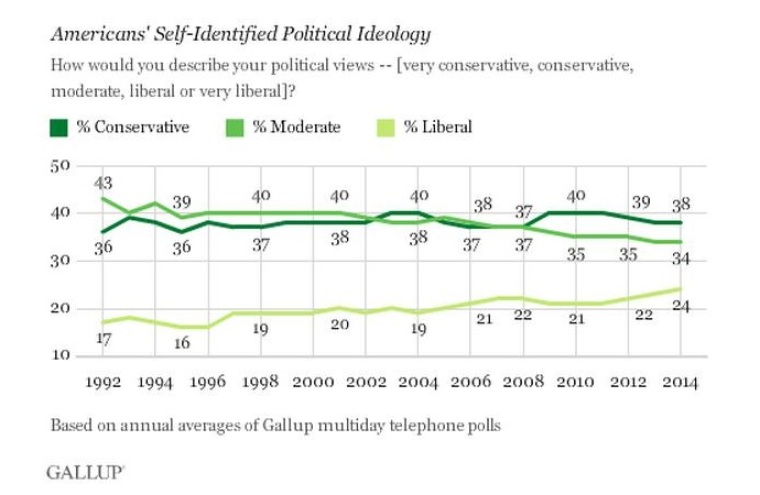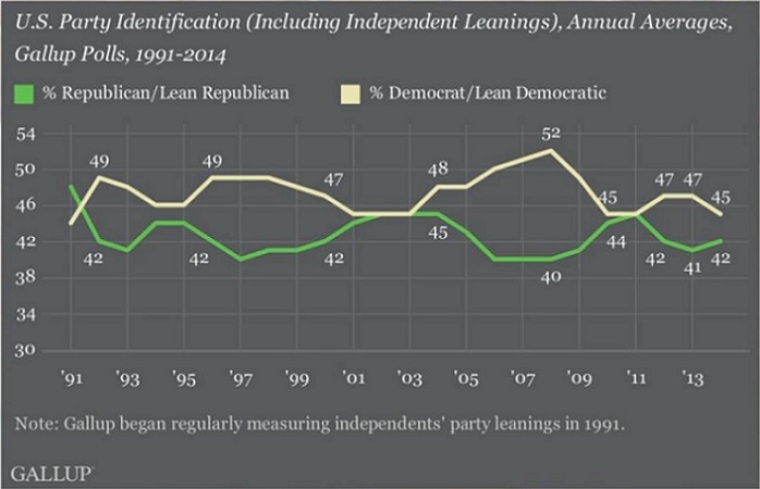American voters 'conservative' in ideology, 'independent' in political identity

WASHINGTON (Christian Examiner) -- Gallup released two polls last week that, combined, present a complex description of American voters in terms of ideology and party affiliation.
"Conservatives" outnumber moderates and liberals, although those claiming a liberal ideology have grown to a record high. On the other hand, the group of voters identifying as "independent" (meaning "independent from a party" and not a member of the "Independent Party") has grown larger than factions tied to either party.
Regarding political thought, "conservatives" make up 38 percent of voters, the same as 2013, according to the results of a year-long polling effort. Moderates also held steady year to year at 34 percent. Meanwhile, liberals trailed at 24 percent, but that ideological category has seen a percentage point increase each of the last three years.
As for political identity, the results of another poll indicate more Americans are claiming no affiliation rather than lining up with either major party.
Nearly 43 percent are independents—up a point over last year, and the most ever during the time Gallup has been tracking the issue.
The increase in independents comes at the expense of the two major parties.
The number of those who call themselves Democrats hit a record low of 30 percent. This is the smallest percentage of voters to claim this affiliation since 1988. Yet, even with a small increase in Republican affiliation, the total aligning with the GOP only reached 26 percent, trailing Democrats by four percentage points.
But Gallup also asked independent voters which way they leaned with regard to party alignment and the findings offer a more textured perspective about political preferences and a clearer picture of Americans' likely voting behaviors.

This broader perspective shows a rollercoaster of sorts over time, with changes oriented with key events in the United States, including the terrorist attacks on 9/11/2001, the war in Iraq and the introduction of Obamacare.
The most recent trend shows the gap closing with a difference in 2014 of only 2.5 points, according to Frank Newport, Gallup's editor-in chief.
For the year, the number of voters affiliated or leaning Republican rose one point to just over 42 percent, and the total of those locked in or leaning Democrat dropped two points to just under 45 percent.
This is the closest point of approach for the two trend lines since 2011.
Newport said the difference showed "a little more Democrat Party identification than Republican, but not a lot."
"It's a new year now," he said, "and in 2015 we will see where party identification goes as we move towards the 2016 election, which is actually not that far away."